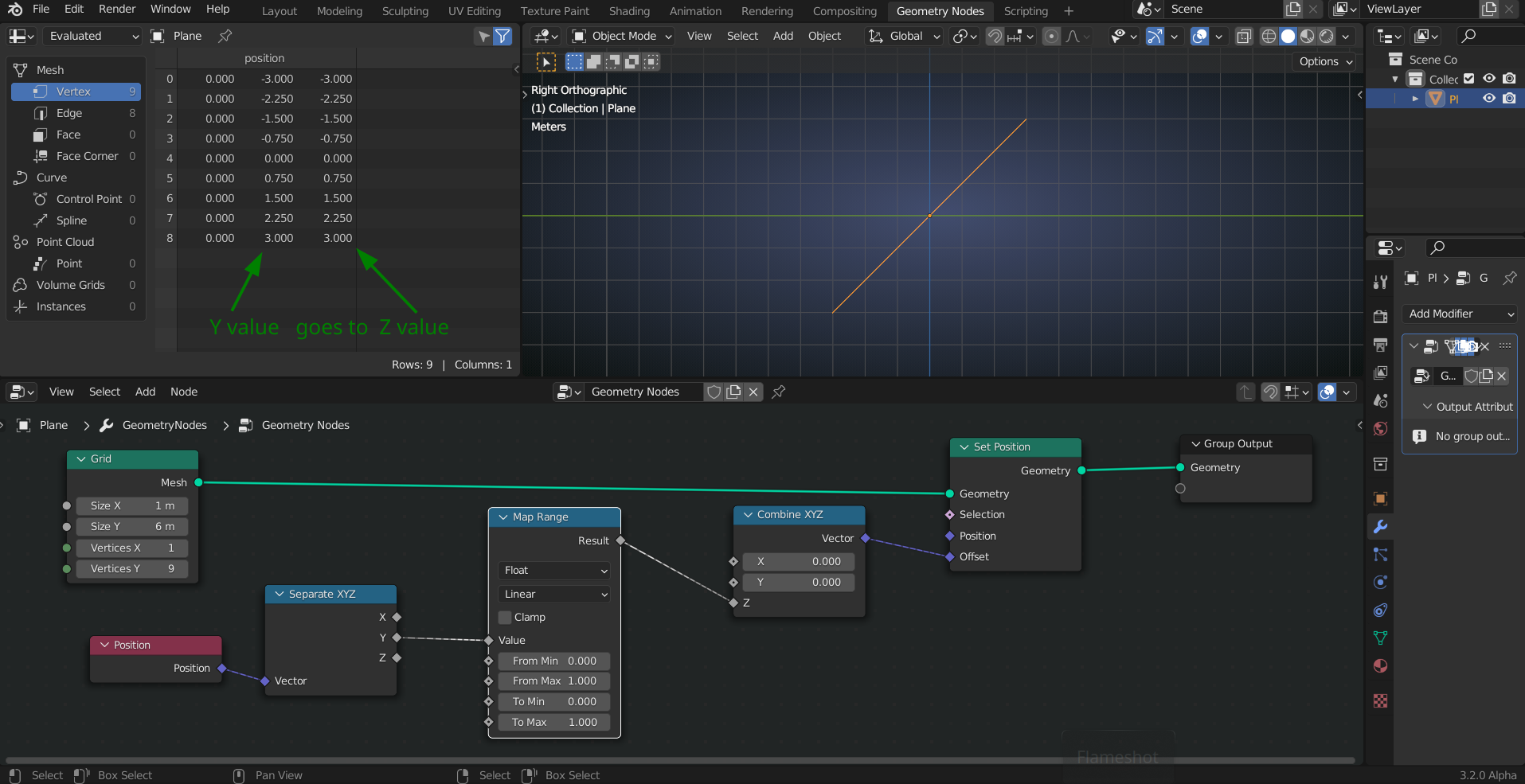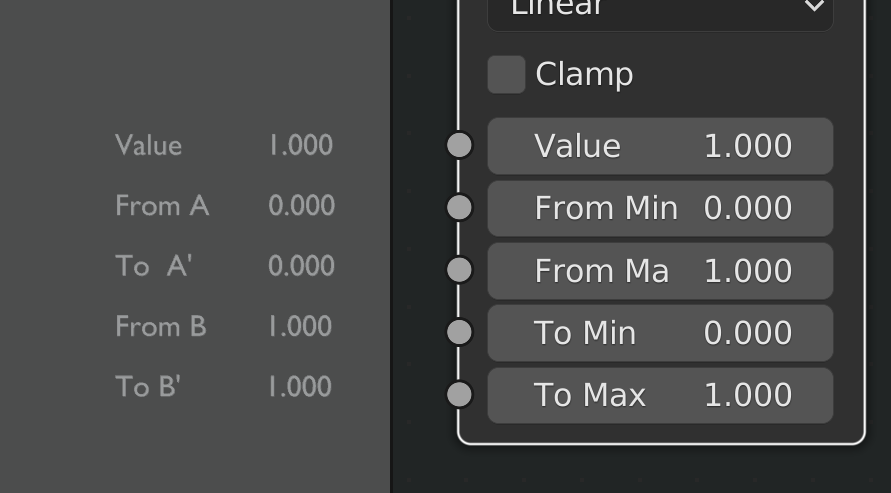Thank you for taking the time to create an in-depth video about the Map Range node. It’s obviously a very powerful tool, and I got a good taste of it during the Pothead course. Although I love procedural texturing and much of it makes perfect sense to me, I’m really struggling with understanding this node. It’s not your instruction. It’s just me. In fact, I seem to have trouble with most of the nodes that use values this way and I’m not sure why. I’m going to keep watching this until it finally clicks, especially since you provided such a nice visual representation of what the node is doing. In the meantime, I’d appreciate any suggestions you or others might have for me.
Maybe try this setup to visualize what is happening:
 You can play with the values of the Map Range Node and see interactively in numbers (Spreadsheet) and graphically what is happening, how values are 'transformed'.
You can play with the values of the Map Range Node and see interactively in numbers (Spreadsheet) and graphically what is happening, how values are 'transformed'.
Increase the Vertex count in the Grid Node (higher resolution) for more graphical accuracy when using other interpolation methods, or Clamping.
About Clamping: @jlampel mentions that it clamps the output of the Map Range Node between 0 and 1, but that is not correct, it clamps the output between the To Min and To Max values:
 Hope this helps a bit.
Hope this helps a bit.
And I think that what adds to the confusion, is the crazy Min Max naming. Which isn't just confusing, but also incorrect; you can have a From (or To) Min that is larger than the From (or To) Max.
Maybe think of it as something like this (notreally a mockup and be aware of the changed, more logical, order):

OMG, thank you for putting so much into that explanation and giving me the benefit of the doubt that I could understand it. Unfortunately, I’m still struggling. From what I do understand, it seems the Map Range node adjusts how other nodes use the 0 to 1 range. Since I don’t fully understand those other nodes, I probably won’t understand the Map Range node until that changes. For a beginners level course, the texture examples such as procedural dirt seem really complex to me and when there are this many nodes and connections, my brain tends to shut down and I just have to walk away for awhile and try again later. So far I’ve just been watching the videos. Perhaps physically following along in Blender may help.
Yes, understanding all the Nodes, especially with complex Node Trees takes time and practice. Don't worry, you'll get there :)
The Map Range Node simply takes a value and changes ( 'maps') that to another. But the input, coming from another Node is usually not one single value and so the Map Range then changes each of those values.
Keep going, understanding Nodes (and many other aspects of Blender and 3D in general) will come with time.
Most kind. Fortunately, Blender doesn’t require me to understand how it works in order to produce quality results, but it sure does help.
jlampel mentions that it clamps the output of the Map Range Node between 0 and 1, but that is not correct, it clamps the output between the To Min and To Max values
Yes, this continues to haunt me haha. Nice visualization with geo nodes! I wish that had been a thing when I made the example